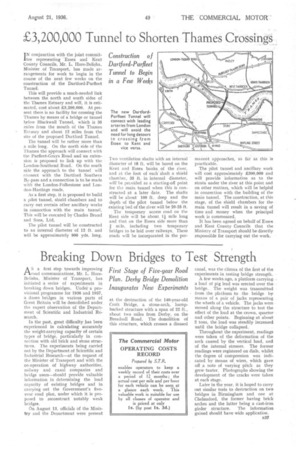Breaking Down Bridges to Test Strength
Page 51

If you've noticed an error in this article please click here to report it so we can fix it.
AS a first step towards improving road communications, Mr. L. BoreBelisha, Minister of Transport, has initiated a series of experiments in breaking down bridges. Under:a .pro visional programme for 1936 and 1937, a dozen bridges in various parts. of Great Britain will be demolished under . the .expert observation of the Department of Scientific and Industrial Research.
In the past, great difficulty has, been experienced in calculating accurately the weight-carrying capacity of certain types of bridge, particularly in connection with old brick and stone structures. The experiments being carried out by the Department of Scientific and Industrial Research—at the request of the Minister of Transport and with the co-operation of highway authorities, railway and canal companies and . bridge users—should provide valuable information in determining the load capacity of existing bridges and in carrying out the Government's fiveyear road plan, under which it is proposed to reconstruct• notably weak bridges.
On August 1:3, officials Of the Ministry and the Department were present
at the destruction of the 140-year-old Croft Bridge, a stone-arch, humpbacked structure with a span of 22 ft., about two miles from Derby, on the Bread sail Road. The demolition of this structure, which crosses a disused canal, was the climax of the first of the experiments in testing bridge strength. •
A few weeks ago, a platform carrying. a load of pig lead 'was erected over the •• bridge. The. weight was transmitted from .tbe. platform to the •bridge by means of a pair of jacks representing the wheels of a vehicle. The jacks were moved along the structure to test the effect of the load at the crown, quarter and other points. Beginning at about 2 tons, the load was steadily increased until the bridge collapsed.
Throughout the experiment, readings were taken of the deformation of the arch caused by the vertical load, and of the internal stresses. The former readings were registered on dials, whilst the degree of compression was indi-, cated by means of wires, which gave off _a note of varying pitch as they grew tauter. Photographs showing the development of the cracks were taken at each stage.
Later in the year, it is hoped to carry out similar tests to destruction on two bridges in Birmingham and one at Chelmsford, the former having brick arches and the latter being a cast-iron girder structure. The information gained should have wide application.




























































































